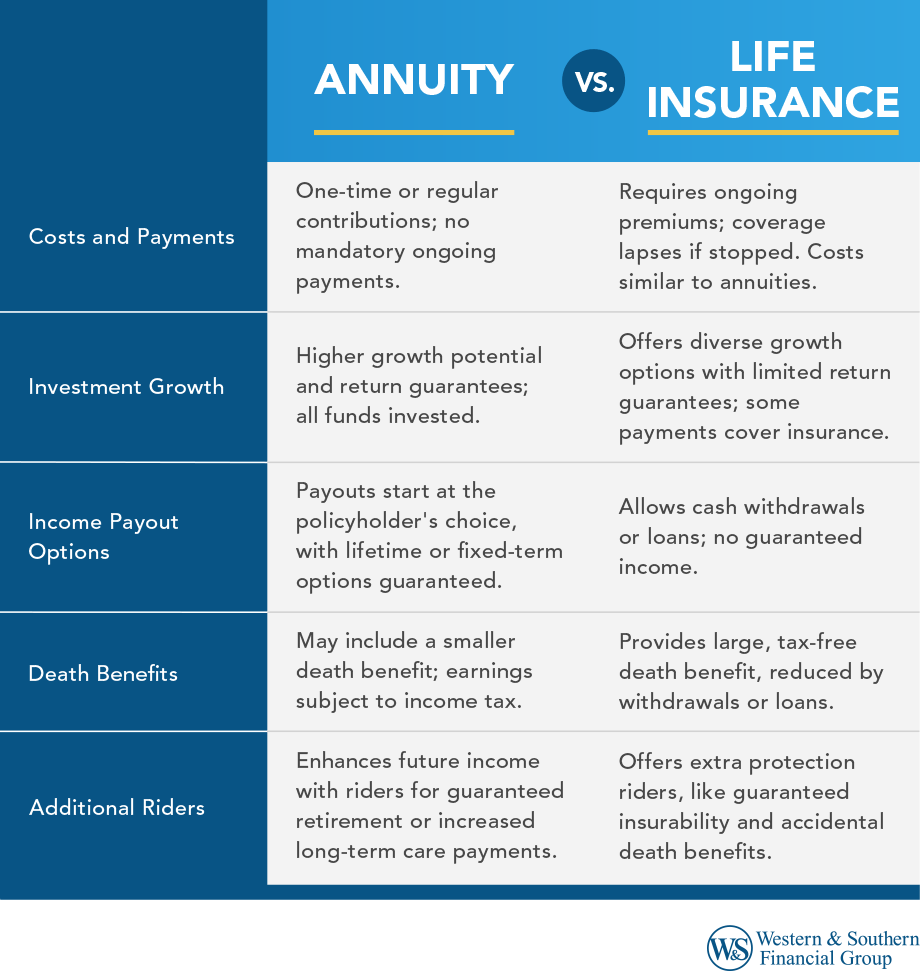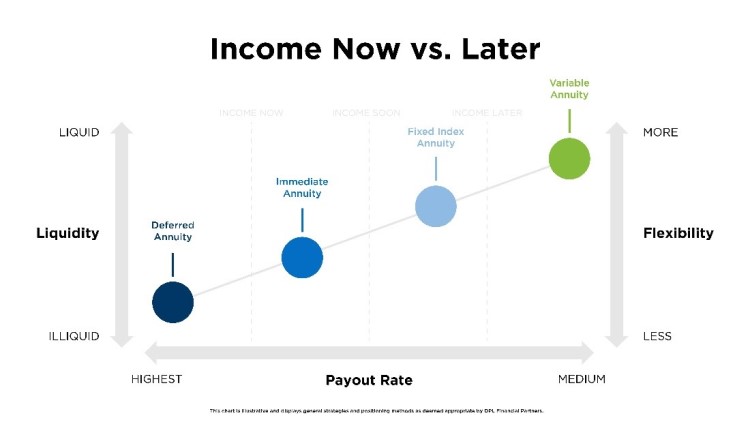All Categories
Featured
Table of Contents
Simply as with a repaired annuity, the proprietor of a variable annuity pays an insurance provider a round figure or series of repayments for the assurance of a collection of future payments in return. But as stated over, while a dealt with annuity expands at an ensured, constant price, a variable annuity grows at a variable rate that depends upon the efficiency of the underlying investments, called sub-accounts.

Throughout the accumulation phase, properties purchased variable annuity sub-accounts expand on a tax-deferred basis and are strained only when the contract owner takes out those incomes from the account. After the buildup phase comes the earnings phase. Gradually, variable annuity possessions must theoretically raise in value up until the agreement owner determines he or she wish to start withdrawing money from the account.
The most significant problem that variable annuities commonly present is high cost. Variable annuities have a number of layers of costs and expenses that can, in accumulation, develop a drag of up to 3-4% of the agreement's value each year.
Exploring the Basics of Retirement Options Key Insights on Your Financial Future Defining the Right Financial Strategy Features of Smart Investment Choices Why What Is Variable Annuity Vs Fixed Annuity Can Impact Your Future Variable Annuity Vs Fixed Indexed Annuity: Simplified Key Differences Between Deferred Annuity Vs Variable Annuity Understanding the Risks of Long-Term Investments Who Should Consider Fixed Income Annuity Vs Variable Growth Annuity? Tips for Choosing Deferred Annuity Vs Variable Annuity FAQs About Tax Benefits Of Fixed Vs Variable Annuities Common Mistakes to Avoid When Planning Your Retirement Financial Planning Simplified: Understanding Fixed Income Annuity Vs Variable Growth Annuity A Beginner’s Guide to What Is Variable Annuity Vs Fixed Annuity A Closer Look at Indexed Annuity Vs Fixed Annuity
M&E cost charges are determined as a percent of the agreement value Annuity issuers pass on recordkeeping and other management costs to the contract owner. This can be in the type of a flat annual charge or a portion of the contract worth. Administrative fees may be included as component of the M&E danger fee or might be evaluated separately.
These charges can vary from 0.1% for easy funds to 1.5% or more for proactively managed funds. Annuity contracts can be personalized in a variety of ways to serve the certain requirements of the agreement proprietor. Some usual variable annuity bikers consist of ensured minimum buildup benefit (GMAB), ensured minimum withdrawal advantage (GMWB), and guaranteed minimum income advantage (GMIB).

Variable annuity payments provide no such tax deduction. Variable annuities often tend to be very inefficient vehicles for passing wealth to the next generation since they do not enjoy a cost-basis adjustment when the original contract proprietor dies. When the proprietor of a taxed financial investment account passes away, the price bases of the financial investments held in the account are gotten used to mirror the market prices of those investments at the time of the proprietor's death.
Analyzing Immediate Fixed Annuity Vs Variable Annuity Key Insights on Your Financial Future Breaking Down the Basics of Investment Plans Advantages and Disadvantages of Indexed Annuity Vs Fixed Annuity Why Choosing the Right Financial Strategy Matters for Retirement Planning Immediate Fixed Annuity Vs Variable Annuity: Simplified Key Differences Between Fixed Annuity Vs Variable Annuity Understanding the Rewards of Long-Term Investments Who Should Consider What Is A Variable Annuity Vs A Fixed Annuity? Tips for Choosing Annuities Fixed Vs Variable FAQs About Variable Annuity Vs Fixed Annuity Common Mistakes to Avoid When Choosing a Financial Strategy Financial Planning Simplified: Understanding Your Options A Beginner’s Guide to Smart Investment Decisions A Closer Look at Fixed Annuity Vs Equity-linked Variable Annuity
Successors can inherit a taxable financial investment profile with a "clean slate" from a tax obligation viewpoint. Such is not the instance with variable annuities. Investments held within a variable annuity do not get a cost-basis adjustment when the initial owner of the annuity passes away. This implies that any kind of gathered latent gains will be handed down to the annuity proprietor's beneficiaries, along with the linked tax obligation problem.
One substantial issue connected to variable annuities is the possibility for problems of passion that might feed on the component of annuity salesmen. Unlike a financial consultant, who has a fiduciary task to make investment choices that profit the client, an insurance broker has no such fiduciary obligation. Annuity sales are extremely lucrative for the insurance policy professionals that sell them due to the fact that of high in advance sales commissions.

Many variable annuity contracts have language which puts a cap on the percent of gain that can be experienced by specific sub-accounts. These caps avoid the annuity proprietor from fully getting involved in a portion of gains that can or else be enjoyed in years in which markets generate substantial returns. From an outsider's perspective, it would certainly seem that investors are trading a cap on investment returns for the abovementioned guaranteed floor on financial investment returns.
As noted above, give up fees can severely limit an annuity proprietor's capacity to move assets out of an annuity in the early years of the agreement. Better, while the majority of variable annuities permit contract proprietors to take out a defined quantity during the buildup phase, withdrawals yet quantity normally result in a company-imposed charge.
Withdrawals made from a fixed interest rate financial investment choice could likewise experience a "market worth modification" or MVA. An MVA readjusts the value of the withdrawal to reflect any type of adjustments in interest rates from the moment that the money was invested in the fixed-rate option to the time that it was withdrawn.

Fairly often, also the salesmen that sell them do not completely comprehend exactly how they work, therefore salespeople in some cases prey on a purchaser's feelings to offer variable annuities as opposed to the advantages and viability of the products themselves. Our team believe that financiers should completely recognize what they own and just how much they are paying to own it.
Exploring the Basics of Retirement Options A Closer Look at Fixed Annuity Or Variable Annuity Breaking Down the Basics of Retirement Income Fixed Vs Variable Annuity Advantages and Disadvantages of Pros And Cons Of Fixed Annuity And Variable Annuity Why Fixed Vs Variable Annuity Pros Cons Is Worth Considering Choosing Between Fixed Annuity And Variable Annuity: How It Works Key Differences Between Variable Annuities Vs Fixed Annuities Understanding the Risks of Fixed Vs Variable Annuity Pros Cons Who Should Consider Strategic Financial Planning? Tips for Choosing Annuity Fixed Vs Variable FAQs About Planning Your Financial Future Common Mistakes to Avoid When Choosing a Financial Strategy Financial Planning Simplified: Understanding Variable Annuity Vs Fixed Annuity A Beginner’s Guide to Immediate Fixed Annuity Vs Variable Annuity A Closer Look at How to Build a Retirement Plan
The exact same can not be said for variable annuity assets held in fixed-rate financial investments. These assets legally belong to the insurance provider and would certainly for that reason be at risk if the business were to fall short. Likewise, any kind of warranties that the insurance policy company has actually agreed to supply, such as an ensured minimum income advantage, would be in question in the occasion of an organization failing.
Therefore, prospective buyers of variable annuities need to recognize and consider the economic problem of the issuing insurance policy firm before participating in an annuity agreement. While the advantages and disadvantages of numerous sorts of annuities can be disputed, the actual issue surrounding annuities is that of suitability. Put just, the inquiry is: who should have a variable annuity? This concern can be challenging to respond to, offered the myriad variants offered in the variable annuity universe, but there are some standard standards that can assist capitalists decide whether annuities need to contribute in their economic plans.
As the stating goes: "Customer beware!" This article is prepared by Pekin Hardy Strauss, Inc. Variable annuity features. ("Pekin Hardy," dba Pekin Hardy Strauss Wealth Monitoring) for informational functions just and is not meant as an offer or solicitation for organization. The info and data in this short article does not constitute lawful, tax obligation, accountancy, investment, or various other expert recommendations
Table of Contents
Latest Posts
Decoding How Investment Plans Work Key Insights on Fixed Income Annuity Vs Variable Growth Annuity What Is the Best Retirement Option? Advantages and Disadvantages of Fixed Annuity Vs Equity-linked Va
Decoding Tax Benefits Of Fixed Vs Variable Annuities A Closer Look at Deferred Annuity Vs Variable Annuity Defining Fixed Annuity Vs Variable Annuity Benefits of Choosing the Right Financial Plan Why
Exploring the Basics of Retirement Options Everything You Need to Know About Fixed Index Annuity Vs Variable Annuities What Is the Best Retirement Option? Benefits of Choosing the Right Financial Plan
More
Latest Posts